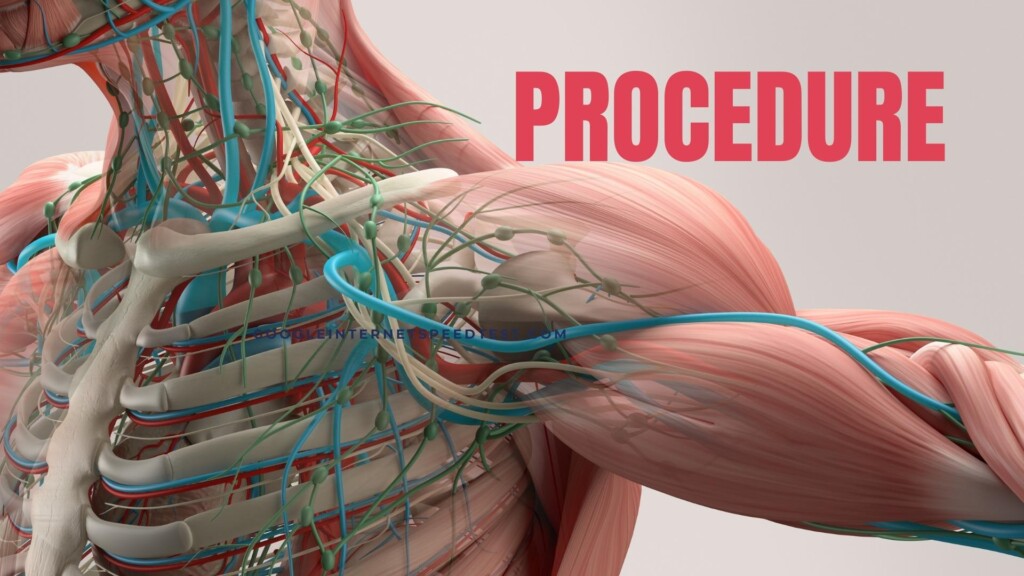Shoulder pain can be frustrating, but fortunately, several remedies are available. One standard treatment is exercise. Performing a speed test for shoulder is the best way to achieve the most effective results.
If you’re experiencing pain or discomfort lifting your arm, it’s time to check out. This article will show you how to do a shoulder speed test using a simple scale and provides tips for completing the test accurately.
Exercising and testing your shoulder mobility daily can increase your range of motion and reduce the likelihood of future injury.
What is a shoulder speed test?
A shoulder speed test is a diagnostic tool that can help determine the cause of shoulder pain. The test is typically performed by standing with your palms facing forward and then slowly rotating your shoulders in a circular motion.

A shoulder speed test is a way to measure how quickly you can move your shoulder joint. This test can help identify whether you have a rotator cuff injury or if your shoulder muscles are weak.
A speed test might be the perfect solution if you’re looking for a way to improve your shoulder strength and mobility.
How to perform shoulder’s speed test
Requirements
- Lie down comfortably on a flat surface
- Resistance band or weight plate
- A timer or watch
Lie down with your hands at your sides to perform the shoulder speed test. Place the resistance band around one of your ankles and attach it to the other end of the band to create a loop.
If using a weight plate, hold it in front of your chest with both hands. Start counting backward from 10 as you lift the weight up and away from your chest. When you reach 1, lower the weight back to the starting position and repeat the process. Record the time it takes to complete the repetition (in seconds).
A shoulder speed test is a way to measure the speed at which your rotator cuff muscles can contract. The test is performed by having you raise your arm above your head and then let go. Your arm should drop quickly to your side.
The faster your arm drops, the stronger your rotator cuff muscles are.
The test can be repeated with the arm raised above the head and then bent at the elbow.
The range of motion should be limited to within 25 degrees of abduction. Abduction; the movement of the arm from its position by the side to 90 degrees forward. As this is how much range of motion is available during everyday activities.
When assessing shoulder position, it is essential to consider a range of motion (ROM) and speed. A shoulder speed test can measure the rotational speed of the shoulder joint.
Procedure
Joint range of motion: The joint should have full ROM in all directions.
Force production: The subject should be able to produce maximal force through the shoulder joint without assistance from other muscles or joints.
Strength: The subject’s strength should be sufficient to produce maximal force through the shoulder joint.
Endurance: The subject should be able to maintain peak force for an extended period.

When checking shoulder speed, you will have to consider a few factors:
- Determine the joint angle at which your shoulder is moving.
- Measure the speed of the motion relative to the joint angle.
- Compare these speeds to determine your shoulder’s functional range of motion.
Positive Speed Test
A side-to-side difference in the strength of the shoulder’s cliff with pain in the bicipital groove region. Suggests pathology in the long head of the biceps, such as tenosynovitis or subluxation.
A second or third-degree sprain of the biceps tendon should be presumed if profound weakness is found on resisted supination.
What positive speed test indicates?
Inflammation of the long head of the biceps tendon as it passes through the bicipital groove.
Possible incision of the transverse humeral ligament with concurrent instability of the bicep’s long head tendon as it passes through the bicipital groove.
Conclusion
The shoulder speed test allows the joint’s range of motion and strength. You can find out which exercises best suit your specific conditions and start toiling on increasing your swiftness accordingly.





